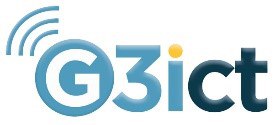Five Important Global ICT Accessibility Policies of 2015
Posted on January 01, 2016

Vice President, Global Strategy and Development, G3ict
James Thurston, G3ict Vice President for Global Strategy and Development, lists out five most important ICT accessibility policy developments of 2015.

One of my favorite things to do at the new year is to read end-of-year lists. There are lists for everything; the best movies, the best books, the best mobile apps, and many more.
But how about a list of new and important accessible information and communication technology (ICT) policies worldwide?
As we move into 2016, it’s useful to look back across 2015 and acknowledge advances made in ICT accessibility laws, regulations, and programs. Last year, governments in all regions of the world took significant policy steps to promote the digital inclusion and human rights of persons with disabilities.
Here is my list of just five of 2015’s most important ICT accessibility policy developments:
- European Accessibility Act (EAA): In December, the European Commission announced this long-awaited Directive. It sets common accessibility requirements for ICT products and services sold in Europe (from PCs to mobile phones to banking services and e-commerce, etc.). The goal is to help people with disabilities to participate fully in society and strengthen the European internal market. Next steps are an 8-week public consultation period, followed by the European Parliament and Council of the European Union acting on it.
- Mexican Web Accessibility Act: On December 3, the Mexican government announced new web accessibility requirements. They apply to all federal government websites and state enterprises (e.g. the electrical commission, PEMEX, etc.). They cover both web applications and websites and reference the W3C’s WCAG 2.0 standard at the AA level.
- UN Sustainable Development Goals (SDGs): The UN’s new development roadmap through to 2030 was adopted in September. Unlike its predecessor, the Millennium Development Goals, the SDG’s 17 goals and associated 169 targets reference disability in an explicit way, including in relation to education, employment, and social, economic, and political inclusion. A focus on disability is critical because 80% of the world’s more than 1 billion persons with disabilities live in developing countries.
- Accessible India: In December, the government launched a broad 5-year campaign to provide more access to persons with disabilities. The Accessible India initiative includes a focus on making ICT more accessible. In the final weeks of 2015, the national government announced it would earmark a portion of the budget of all ministries for making their public offices and websites accessible and called on state governments do the same. There have been calls for the country’s significant Smart Cities program to include more of a focus on accessibility as well.
- The Marrakech Treaty: In 2015, this treaty took several steps toward becoming a reality. The treaty provides greater access to published works for persons with disabilities by requiring ratifying countries to create an exception to domestic copyright law for visually impaired and print-disabled people. 20 countries must ratify the treaty for it to go into effect. In 2015, an additional 8 countries ratified the treaty, bringing the total to 13.
Of course, this is not an exhaustive list. In fact, every day G3ict’s Accessibility Worldview service scans more than 1 million news items across hundreds of resources and in multiple languages to identify important government accessibility policy activities worldwide.
These five ICT accessibility policy actions represent the good work happening in many countries.





























